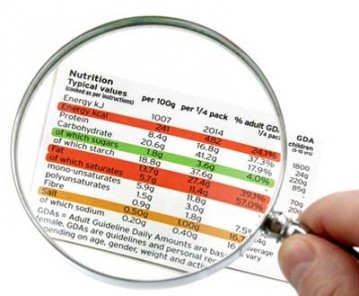
Target marketing has brought about evidence suggesting colored food labels and strategic positioning in display cases may help consumers make healthier choices. In a report from Massachusetts General Hospital (MGH) published in the American Journal of Preventive Medicine, evidence suggests people from all racial and ethnic groups respond to such marketing strategies.
Encouraging healthy eating habits is of particular concern for Hispanics and non-Hispanic blacks, say study authors.
“These findings are important because obesity is much more common among Americans who are black or Latino and among those of low socioeconomic status,” said to Science Codex Douglas Levy, PhD, of the Mongan Institute for Health Policy at MGH. “Improving food choices in these groups may help reduce their obesity levels and improve population health.”
The study was developed to help recognize healthy food choices among the many available at grocery shops and cafeterias. According to MGH researchers, people from lower socioeconomic standings or low levels of education don’t always understand the complex ingredient labeling currently used on food products. By using colored food labels, knowing nutritional value could be as easy as recognizing a color.
To test the theory, study authors devised a two-step approach for the research. During the first trial, green, yellow and red labels were attached to the food items in a hospital cafeteria. Green represented the healthiest options; yellow represented moderately healthy items; and red represented the least healthy choices.
After three months of using the colored labels, MGH researchers rearranged where popular items in the cafeteria were displayed. For example, health beverages with a green label were placed at eye level in display units, while drinks with red or yellow labels were placed below eye level. Eventually, the same process was done with all food items in the cafeteria.
Once the labeling and arrangement process was complete, more than 4,000 hospital employees purchasing lunch through a payroll deduction program were analyzed. Researchers kept track of purchases, racial and ethnic background, and job position.
From what study authors saw at the beginning of the study, Latinos and non-Hispanic blacks purchased more items with red labels than they did those with green labels; however, at the end of the intervention process, all participants had increased the number of green label purchases and had lowered their daily spending overall.
“Further study is needed to determine the long-term effect of these interventions and whether additional steps could improve their effectiveness in particularly vulnerable populations,” said Levy. “But because these measures are both simple and inexpensive to implement, they could easily be tried in a variety of food sales environments – such as cafeterias, convenience stories and even vending machines.”
Source: Published originally on VOXXI.com as Color Marketing Strategy Could Help Hispanics Make Healthier Choices,August 13, 2012